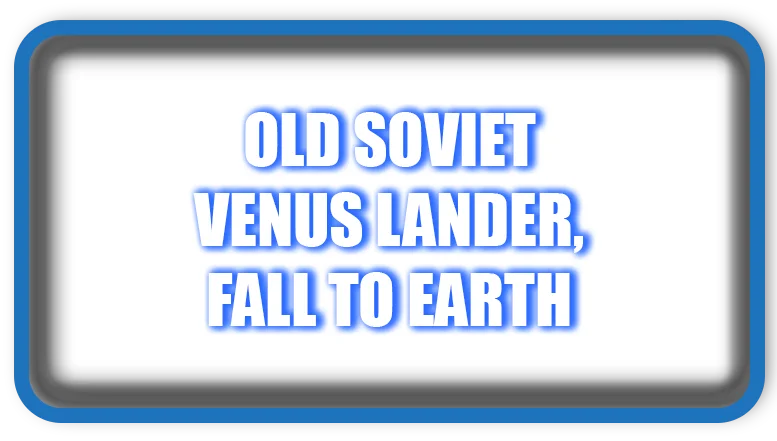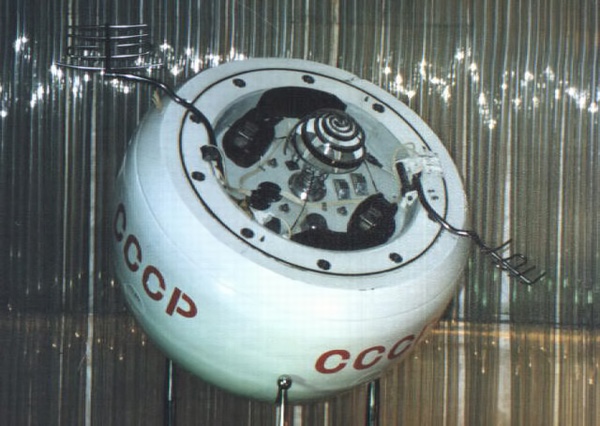⏲️ Estimated reading time: 4 min
Old Soviet Venus Lander’s Fall to Earth: Why This Is No Ordinary Space Junk Crash. A forgotten relic of the Cold War era the Soviet Union’s Venus lander is making an unexpected return to Earth. But this isn’t your usual space debris. Here’s what makes this fall unique and historically significant.
The Soviet Spacecraft That’s Coming Home
Decades after its launch, an old Soviet spacecraft originally intended for Venus is now headed back to Earth. But unlike typical space junk, this reentry is drawing attention from space agencies and historians alike. It’s not just about the fireball it might create in the sky it’s about the story it carries.
What Was the Soviet Venus Lander?
During the height of the space race, the Soviet Union launched several missions aimed at exploring Venus. One such probe Kosmos 482, launched in 1972 was supposed to reach Venus. However, a failure during its orbital burn stranded it in Earth orbit.
Although the mission failed, the lander component of Kosmos 482 separated and entered a highly elliptical orbit. Thanks to its dense and heat-shielded design (meant to withstand the intense Venusian atmosphere), it’s still mostly intact. And now, more than 50 years later, it’s about to fall back to Earth.
Why This Reentry Is Different
Most space junk disintegrates on reentry due to friction with the Earth’s atmosphere. But Kosmos 482’s lander was built like a tank literally. Designed to survive a descent into Venus’s hostile environment, it has titanium shielding, thick walls, and compact structure. That makes it far more durable than typical space debris.
Some experts believe that large parts could survive reentry and crash into Earth possibly even intact. That’s rare and makes this event much more than just another deorbiting satellite.
What Are the Risks?
The lander is expected to fall somewhere on Earth in the coming years estimates suggest sometime between 2025 and 2027, depending on atmospheric drag and orbital decay. However, pinpointing the exact location is extremely difficult, and there’s no way to guide it.
Still, the risk to humans is minimal. Most of the Earth is covered by oceans or unpopulated regions, so the chances of impact in a populated area remain very low.
A Time Capsule from the Cold War
What makes Kosmos 482’s return fascinating is its historical context. It’s a relic from an era when superpowers competed for interplanetary dominance, and Venus missions were cutting-edge science. The Soviet Venera program achieved numerous milestones, including the first landing on another planet.
Though Kosmos 482 never made it, its hardware is a testament to the Soviet engineering of the time and to a forgotten chapter in the race for space exploration.
Could It Be Recovered?
If the lander survives the fiery descent and lands on solid ground, it could be a valuable scientific artifact. Recovery efforts might be mounted if the location is accessible and safe.
However, there could also be political or legal complications. Under international space law, the object technically still belongs to Russia (as the successor state of the Soviet Union). So even if someone finds it, it may be considered foreign property.
A Reminder of Humanity’s Reach and Debris
Kosmos 482 is a unique case that reminds us not only of our ambitions to reach other worlds but also of the space junk we’ve left behind. While not dangerous in the traditional sense, it symbolizes the need for responsible space exploration and satellite management.
What Comes Next?
Space agencies will continue to monitor Kosmos 482’s trajectory. If it begins a final descent phase, we may see warnings and updates, possibly even international cooperation for tracking.
In the meantime, the story of the Soviet Venus lander falling back to Earth remains one of the most intriguing examples of how our past in space still echoes in the present.
📩 Do you have questions or suggestions? Leave a comment or contact us!
🏷️ Tags: Soviet space program, Kosmos 482, Venus lander, space junk, Cold War, space history, satellite reentry, Earth atmosphere, space debris, Russia space agency
Only logged-in users can submit reports.
Discover more from HelpZone
Subscribe to get the latest posts sent to your email.


